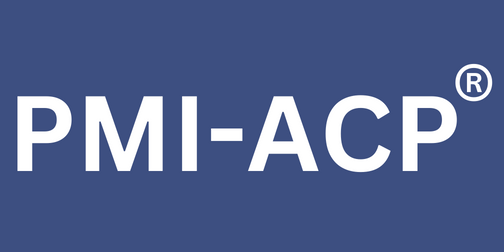.png)
MBB for Quality Management: A Data-Driven Approach
Posted On May 7, 2024 - 15:15 PM
Applying management by business (MBB) principles and data analytics can help organizations optimize their quality management systems and processes.
Delivering high-quality products and services is essential for any organization's success. Traditionally, quality management has relied on experience and intuition. However, a new approach is emerging that leverages the power of data and analytics. This approach, built on the principles of Management by Business (MBB), empowers organizations to achieve significant and sustainable improvements in their quality management systems.
This outline explores how organizations can integrate MBB and data science to develop a robust data-driven quality management strategy. We will delve into:
-
How MBB consultancies can leverage data analytics to enhance quality management.
-
The steps involved in implementing a data-driven quality management program.
-
The key benefits of adopting this approach for organizations.
Assess the Current State of Quality Management: Building a Strong Foundation
Before diving into data analysis and improvement initiatives, it's crucial to understand your organization's existing quality management landscape. This initial assessment phase acts as the foundation for a successful data-driven approach. Here's how to conduct a comprehensive evaluation:
1. Process Mapping: Unveiling the Workflow
-
Conduct detailed process mapping: Visually map your current workflows for key processes that impact quality. This helps identify potential bottlenecks, redundancies, and areas where data can be captured for better control.
-
Focus on critical quality areas: Prioritize mapping processes that directly affect customer satisfaction or have a high risk of defects.
2. Identifying the Quality Compass: Key Metrics
-
Establish key performance indicators (KPIs): Identify quantifiable metrics that measure your current quality performance. Examples include defect rates, customer satisfaction scores, and process cycle times.
-
Focus on relevant and actionable metrics: Choose metrics that provide valuable insights and can be used to track progress over time.
3. Root Cause Analysis: Delving Deeper into Defects
-
Perform root cause analysis (RCA) on existing quality issues: Analyze recurring defects and customer complaints to identify the underlying causes. This helps prevent similar issues from happening again.
-
Utilize data and process maps: Leverage data insights and process maps to pinpoint areas where defects are most likely to occur.
4. Highlighting Areas for Improvement: Charting the Course
-
Analyze data and findings: Analyze the gathered information from process maps, KPIs, and RCA to identify areas with the most significant impact on quality.
-
Prioritize opportunities for improvement: Focus on areas with high defect rates, customer dissatisfaction, or process inefficiencies. This helps you prioritize your data-driven improvement efforts.
By following these steps, you gain a clear understanding of your current quality management state. This sets the stage for developing a targeted data-driven strategy that addresses your organization's specific needs and opportunities for improvement.
Build a Quality Data Foundation: The Bedrock of Insights
A robust data foundation is essential for a successful data-driven quality management program. This section outlines the key steps involved in building this critical foundation:
1. Identifying the Data Goldmine: What Quality Data Matters?
-
Define data requirements: Determine the specific data points needed to track your quality KPIs and measure the impact of improvement initiatives.
-
Focus on relevant and actionable data: Collect data that provides valuable insights into your quality processes and allows you to make data-driven decisions.
2. Streamlining the Flow: Data Collection Processes
-
Establish data collection processes: Define clear procedures for how data will be collected from various sources (e.g., production lines, customer surveys, internal databases).
-
Ensure data accuracy and completeness: Implement data validation techniques to minimize errors and missing data points.
3. Centralized Hub: Managing Your Data Repository
-
Establish a central data repository: Create a centralized location to store all your quality-related data. This allows for easy access, analysis, and management.
-
Consider data governance practices: Implement data governance policies to ensure data security, integrity, and accessibility for authorized users.
4. Cleaning and Standardizing the Data: Preparing for Analysis
-
Clean and standardize data: Cleanse your data to remove errors, inconsistencies, and duplicate entries. Standardize data formats to ensure consistency for analysis.
-
Utilize data quality tools: Consider using data quality management tools to automate data cleaning and standardization processes.
By following these steps, you build a strong data foundation that provides high-quality, reliable data for your data-driven quality management program. This clean and organized data serves as the fuel for generating valuable insights and driving continuous improvement initiatives.
Statistical Process Control Charts: Monitoring Performance with Data Visualization
Statistical Process Control (SPC) charts are powerful graphical tools used to monitor process performance over time and identify potential issues before they significantly impact quality. Here's how SPC charts play a vital role in a data-driven quality management program:
-
Visualizing Process Behavior: SPC charts plot data points (e.g., defect rates, measurement values) chronologically. This allows you to visually identify trends, patterns, and deviations from the expected behavior.
-
Differentiating Variation: Friend or Foe? SPC charts help distinguish between two types of variation:
-
Common Cause Variation: Inherent and unavoidable variation within a stable process.
-
Special Cause Variation: Variation caused by assignable factors that disrupt the process and can lead to quality issues.
-
Control Limits: Setting the Boundaries SPC charts include control limits (upper and lower) statistically calculated based on historical data. These limits define the expected range of variation for a stable process.
-
Taking Actionable Insights: When data points fall outside the control limits, it signals a potential special cause variation. This triggers investigation and corrective action to address the issue and prevent recurring problems.
By incorporating SPC charts into your data-driven quality management program, you gain a proactive approach to monitoring process performance. Early identification of potential issues allows you to take timely corrective actions and ensure your processes remain within acceptable control limits, ultimately leading to improved and consistent quality.
Data Visualization for Insights: Unlocking the Power of Seeing
Data visualization plays a critical role in transforming raw data into actionable insights for your data-driven quality program. Here are key ways to leverage visualizations for effective quality improvement:
-
Spotting Trends and Patterns: Utilize various data visualization techniques (e.g., bar charts, line graphs, scatter plots) to identify trends and patterns in your quality data. This helps you understand how different factors (e.g., raw material variations, supplier performance) affect your processes and quality outcomes.
-
Interactive Dashboards for Real-time Action: Develop interactive dashboards that display key quality metrics and SPC charts in real-time. This allows stakeholders to monitor process performance continuously, identify emerging issues quickly, and make data-driven decisions for immediate course correction.
-
Data Storytelling: Communicating the "Why" Don't just present data; tell a story with it. Use data visualizations to create compelling narratives that communicate insights about quality issues, root causes, and the impact of improvement initiatives. This fosters a data-driven culture and empowers stakeholders to actively participate in quality improvement efforts.
By effectively utilizing data visualization techniques, you can transform complex data sets into clear and actionable insights. This empowers you to identify quality issues more readily, understand their root causes, and communicate the impact of improvement initiatives in a way that resonates with all stakeholders.
Continuously Improve Processes: The Engine of Excellence
A data-driven quality management program is not a one-time fix; it's a continuous improvement journey. This section explores how to leverage data and process improvement methodologies to achieve sustained quality excellence:
1. Data-Driven Prioritization: Targeting the Right Issues
-
Analyze data to identify opportunities for improvement: Utilize data insights from control charts, trend analysis, and other techniques to pinpoint areas with the highest impact on quality. Focus on areas with high defect rates, customer dissatisfaction, or process inefficiencies.
-
Prioritize improvement initiatives: Based on data analysis and potential return on investment (ROI), prioritize improvement initiatives that will yield the most significant improvements in quality.
2. Methodical Improvement: A Toolbox of Techniques
-
Leverage proven process improvement methodologies: Integrate methodologies like Lean, Six Sigma, and Design of Experiments (DoE) to guide your improvement efforts. These methodologies provide structured frameworks for identifying waste, streamlining processes, and optimizing performance.
3. Develop and Pilot Solutions: Testing Before Takeoff
-
Develop data-driven solutions: Based on your data analysis and chosen improvement methodology, develop targeted solutions to address the identified quality issues.
-
Pilot changes on a small scale: Before implementing changes across the entire organization, pilot your solutions on a smaller scale to test their effectiveness, identify potential challenges, and refine them as needed.
4. Monitor, Measure and Iterate: The Feedback Loop
-
Continuously monitor performance: Track the impact of your implemented solutions using the same data metrics you established earlier.
-
Measure success and iterate: Evaluate the effectiveness of your solutions based on the collected data. If successful, implement them more broadly. If not, analyze the results, make adjustments, and iterate on your approach.
This continuous improvement cycle ensures that your data-driven quality management program remains dynamic and responsive to evolving challenges and opportunities. By constantly analyzing data, implementing targeted improvements, and measuring progress, you can achieve and sustain a culture of quality excellence within your organization.
Automation and AI for Efficiency: Supercharging Quality Improvement
In today's data-driven world, automation and artificial intelligence (AI) offer powerful tools to further enhance the efficiency and effectiveness of your quality management program:
-
Automating Repetitive Tasks: Many quality control tasks, such as data entry, inspection of simple features, and report generation, can be automated. This frees up human workers to focus on more complex tasks that require judgment and creativity. Automation also reduces the risk of human error in data collection and analysis.
-
Predictive Quality Control with AI: AI algorithms can be trained on historical data to identify patterns and predict potential quality issues before they occur. This allows for preventive maintenance, early intervention, and proactive steps to minimize defects and disruptions.
-
Machine Learning for Process Optimization: Machine learning can analyze vast amounts of data to identify hidden relationships between process variables and quality outcomes. This allows for continuous process optimization by fine-tuning parameters and settings to achieve the most desirable quality characteristics.
By strategically integrating automation and AI into your data-driven quality program, you can achieve significant benefits:
-
Increased Efficiency: Automation frees up human resources for more valuable tasks, and AI streamlines analysis and decision-making.
-
Improved Accuracy: Automation reduces human error, and AI algorithms can identify subtle patterns in data that might be missed by humans.
-
Enhanced Proactivity: Predictive quality control with AI allows you to anticipate and address potential issues before they escalate.
-
Data-Driven Optimization: Machine learning helps you continuously fine-tune processes for optimal quality outcomes.
While automation and AI offer significant advantages, it's important to remember that they are tools to empower your human workforce. The human element remains crucial for tasks requiring judgment, critical thinking, and creative problem-solving.
Conclusion
In conclusion, a data-driven approach to quality management, informed by MBB principles, offers a powerful path to continuous improvement. Organizations can leverage this approach to gain a comprehensive understanding of their quality landscape, establish a strong data foundation, proactively monitor performance through data visualization, and implement data-driven solutions for process improvement. Additionally, automation and AI can streamline tasks, predict quality issues, and optimize processes for even greater efficiency and effectiveness. By embracing this data-driven strategy, organizations can achieve a culture of quality excellence, leading to increased customer satisfaction and long-term business success.


















